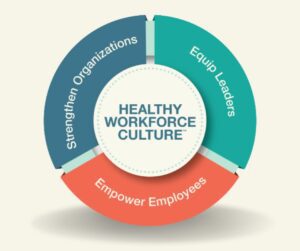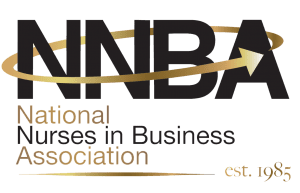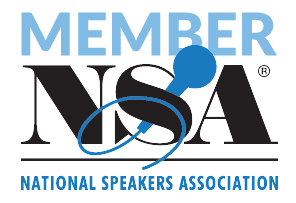 You may be familiar with Gary Chapman’s book, “The 5 Languages of Appreciation in the Workplace: Empowering Organizations by Encouraging People.“ Gary introduces the idea that individuals have distinct ways of expressing and receiving love, with each person having a primary love language. When considering these principles in the context of fostering a positive work culture and acknowledging contributions, it becomes evident that we each have a preferred manner of recognition for our efforts. This insight could be applied to the work culture, especially in February, often associated with expressions of love and appreciation.
You may be familiar with Gary Chapman’s book, “The 5 Languages of Appreciation in the Workplace: Empowering Organizations by Encouraging People.“ Gary introduces the idea that individuals have distinct ways of expressing and receiving love, with each person having a primary love language. When considering these principles in the context of fostering a positive work culture and acknowledging contributions, it becomes evident that we each have a preferred manner of recognition for our efforts. This insight could be applied to the work culture, especially in February, often associated with expressions of love and appreciation.
How to adapt The 5 Languages of Appreciation in your work environment:
Words of Affirmation
The word “affirm” means to state something as a fact or assert it strongly and publicly. Affirmations in the work environment can include phrases like, “You rock!”, “Thanks for being such a great team member“, or “You’re awesome.” Beyond verbal affirmations, the act of conveying appreciation and recognition can also manifest through more tangible means, such as writing thoughtful notes to team members. These affirmations not only recognize individual efforts but also contribute to a positive and motivated atmosphere, ultimately enhancing team dynamics and productivity.
Quality Time
Quality time involves actively setting aside distractions, such as ignoring phone calls or stepping away from the computer, to be fully present when approached. This entails dedicating undivided attention to a team member and demonstrating a genuine focus on their needs and concerns. One practical approach is to schedule designated times, such as the end of their shift or a lunch break, to engage in meaningful conversations without any disruptions. By making a conscious effort to create these communication-friendly windows, you create an environment where open dialogue can flourish, enhancing collaboration and understanding within the team.
Receiving Gifts
Expressing appreciation and recognition through thoughtful small gifts is a wonderful way to acknowledge the hard work and dedication of your team members. These tokens of appreciation don’t have to break the bank; it’s the sentiment behind the gesture that truly matters. Simple acts like surprising a colleague with a cup of coffee or bringing them their favorite snack can create a positive and uplifting atmosphere in the workplace.
A well-chosen gift reflects your appreciation for their contributions and your awareness of their individual preferences. A carefully selected treat, whether it’s their favorite candy or a special snack, communicates that you value their hard work and want to make their day a little brighter.
These small gestures contribute to a positive work culture, creating an environment where team members feel seen, appreciated, and motivated to continue putting in their best efforts. The power of thoughtful gifts lies not in their price tag but in the genuine appreciation and recognition they convey, which creates a sense of connection and unity among team members. According to author Tiffani Bova who wrote, 5 Factors That Make for a Great Employee Experience, recognizing team members success is critical for creating a great employee experience. What you “appreciate – appreciates”!
Acts of Service
Offering a helping hand when a colleague is attending to a patient showcases a spirit of collaboration and support, creating a sense of unity among team members. Likewise, stepping in to cover for a colleague during a brief absence, whether for a restroom break or attending to personal matters, demonstrates a level of understanding and teamwork that goes beyond the scope of individual tasks.
Beyond the immediate demands of the workplace, showing your team appreciation and recognition through small, yet impactful, actions such as picking up something from the cafeteria. This seemingly simple act can make a significant difference by alleviating stress or providing a moment of relief for a busy team member. It reflects a keen awareness of their needs and a willingness to go the extra mile to contribute to their well-being.
Physical Touch
Human connection is a multifaceted experience, and for many individuals, the power of physical touch serves as a profound conduit for establishing and deepening bonds.
When it comes to interpersonal relationships, there’s something special about physical touch that words just can’t quite capture. A high-five creates a sense of shared accomplishment. It’s like you’re saying, “Hey, we did this together, we’re in sync, and I’ve got your back.” A friendly touch on the shoulder during praise communicates not just approval but also empathy and encouragement. It’s like a silent way of saying, “You’re doing great, keep going.”
These physical touches are more than just actions; they are powerful tools that transcend language and convey a depth of emotion. They speak volumes without needing any words. They build this unspoken connection that’s based on trust, understanding, and gratitude. For those who thrive on physical connection, these gestures become the glue that holds relationships together. They’re like threads weaving through the fabric of shared experiences—moments of joy, support, and appreciation all stitched together into something meaningful.
Creating a workplace where people feel valued isn’t just a bonus—it’s key to organizational success and employee well-being. Acknowledging and valuing the efforts of individuals boosts morale and cultivates a positive work environment. By considering the “love language” of each team member, leaders can create a workplace where employees feel seen, heard, and motivated to contribute their best. As a result, organizations enhance employee engagement and build a foundation for sustained growth and success. Ultimately, the simple act of showing appreciation and recognition has the potential to transform a workplace into a healthy, respectful, and kinder place.












